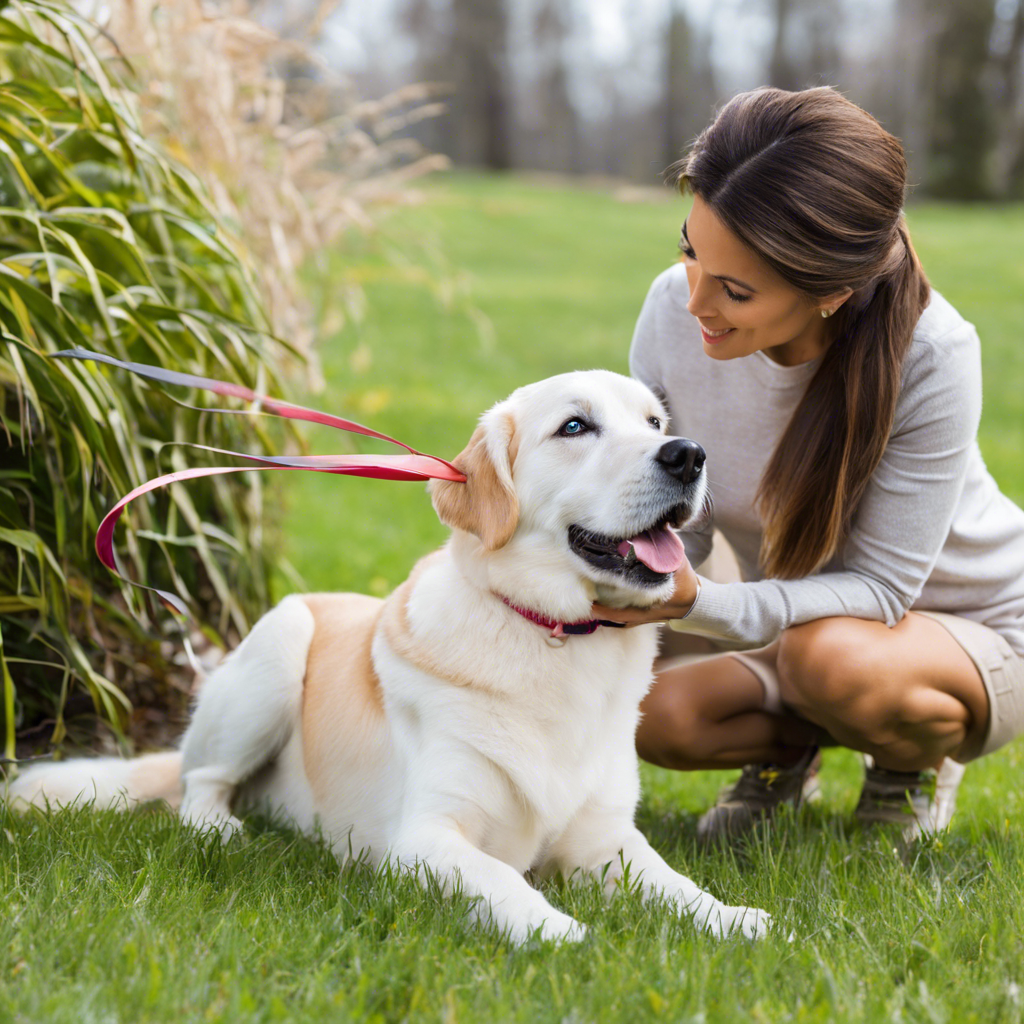# Training Your Dog for Therapy Work: A Rewarding Journey
Therapy dogs have an extraordinary ability to bring comfort, joy, and emotional support to individuals in hospitals, schools, nursing homes, and various other settings. These four-legged heroes work tirelessly to improve people’s well-being, reduce stress, and provide unconditional love. However, not every dog is suited for this special role. Training a therapy dog requires dedication, patience, and a thorough understanding of the process. So, let’s dive into what it takes to prepare your dog for this noble purpose.
## Choosing the Right Candidate
The first step in training a therapy dog is selecting a suitable dog with the right temperament and personality. While any breed can potentially become a therapy dog, certain traits make some dogs better candidates than others. Look for a dog that is naturally calm, friendly, and enjoys human interaction. They should be easygoing and comfortable in various environments, as therapy dogs will encounter different people, places, and situations.
Temperament testing is a valuable tool to assess a dog’s suitability for therapy work. This involves exposing your dog to various stimuli and situations to gauge their reactions. A certified dog trainer or behaviorist can guide you through this process, helping you identify your dog’s strengths and areas that may need improvement.
## Socialization and Obedience Training
Therapy dogs must be well-socialized and obedient to excel in their role. Socialization is the process of exposing your dog to different environments, people, animals, and experiences, ensuring they remain calm and composed. This training should begin early in your dog’s life and continue throughout their development. Take your dog to parks, busy streets, pet-friendly stores, and arrange playdates with other dogs and people to create positive associations.
Obedience training is equally crucial. Your dog should respond promptly to basic commands such as sit, stay, come, heel, and leave it. These commands are essential for maintaining control and ensuring your dog behaves appropriately in various situations. Training methods should be positive, reward-based, and consistent to reinforce good behavior.
## Professional Therapy Dog Training
Once your dog has mastered basic socialization and obedience, it’s time to enroll in a specialized therapy dog training program. These programs are designed to prepare your dog for the unique challenges of therapy work. They focus on advanced skills, such as interacting with special equipment, handling different surfaces, and maintaining a calm demeanor around distractions.
Therapy dog training programs typically include certification assessments, which evaluate your dog’s suitability for therapy work. These assessments involve testing your dog’s reaction to various stimuli, including loud noises, unusual objects, and different types of touch. The evaluator will also observe your dog’s behavior around people with disabilities, children, and other individuals they may encounter during therapy visits.
## Certification and Registration
After completing the training and passing the certification assessment, your dog will be certified as a therapy dog. Certification requirements vary by organization, but most include a comprehensive evaluation of your dog’s temperament, behavior, and obedience. Some well-known therapy dog organizations include Therapy Dogs International (TDI), Pet Partners, and the Alliance of Therapy Dogs.
Registering your therapy dog with one of these organizations is essential for legal protection and insurance purposes. It also allows you and your dog to participate in organized therapy dog visits to facilities and events. Many organizations offer additional training resources, liability insurance, and support throughout your therapy dog journey.
## Maintaining Skills and Continued Training
Therapy dog training is an ongoing process. Regular practice and reinforcement of learned skills are crucial to keep your dog sharp and reliable. Continued training ensures that your dog remains well-behaved and adaptable to different situations.
Staying involved with a therapy dog organization provides access to resources, workshops, and ongoing support. These organizations often offer opportunities for advanced training, allowing your dog to specialize in specific areas, such as reading assistance programs, disaster response, or working with individuals with disabilities.
## Benefits of Therapy Dog Work
Training a therapy dog is a rewarding experience that benefits both you and your canine companion. Therapy dogs provide comfort and emotional support, helping to reduce anxiety, improve mood, and enhance overall well-being in those they interact with.
For the handler, therapy dog work offers opportunities to give back to the community, build new relationships, and develop a deeper bond with their dog. It is a fulfilling experience to witness the positive impact your dog can have on others’ lives. Moreover, therapy dog work can be a great way to teach children empathy, responsibility, and kindness.
## Conclusion
Training a therapy dog is a commitment that requires time, patience, and dedication. It is a process filled with learning, growth, and joy as you and your dog work together to make a positive difference in the lives of others. By choosing the right candidate, focusing on socialization and obedience, and seeking professional training, you can set your dog up for success in this noble role.
The journey of becoming a therapy dog team is truly rewarding, and the impact you can have on others is immeasurable. So, if you and your dog have the right temperament and passion for making a difference, consider embarking on this special path and sharing the love and joy your dog brings to the world.

